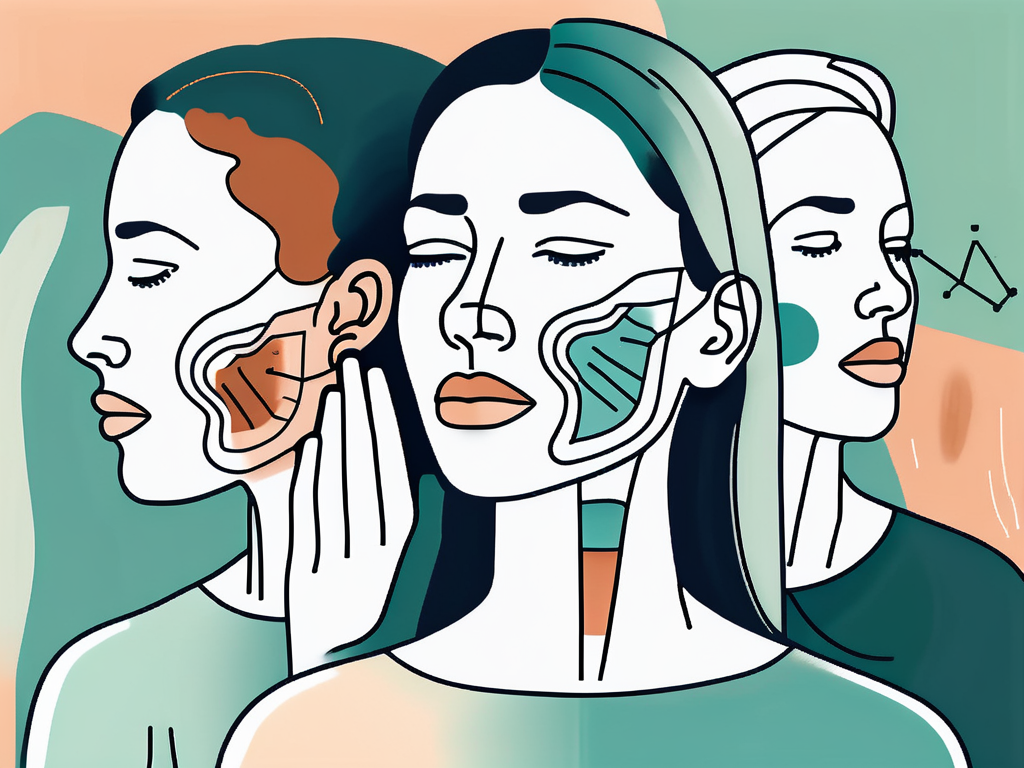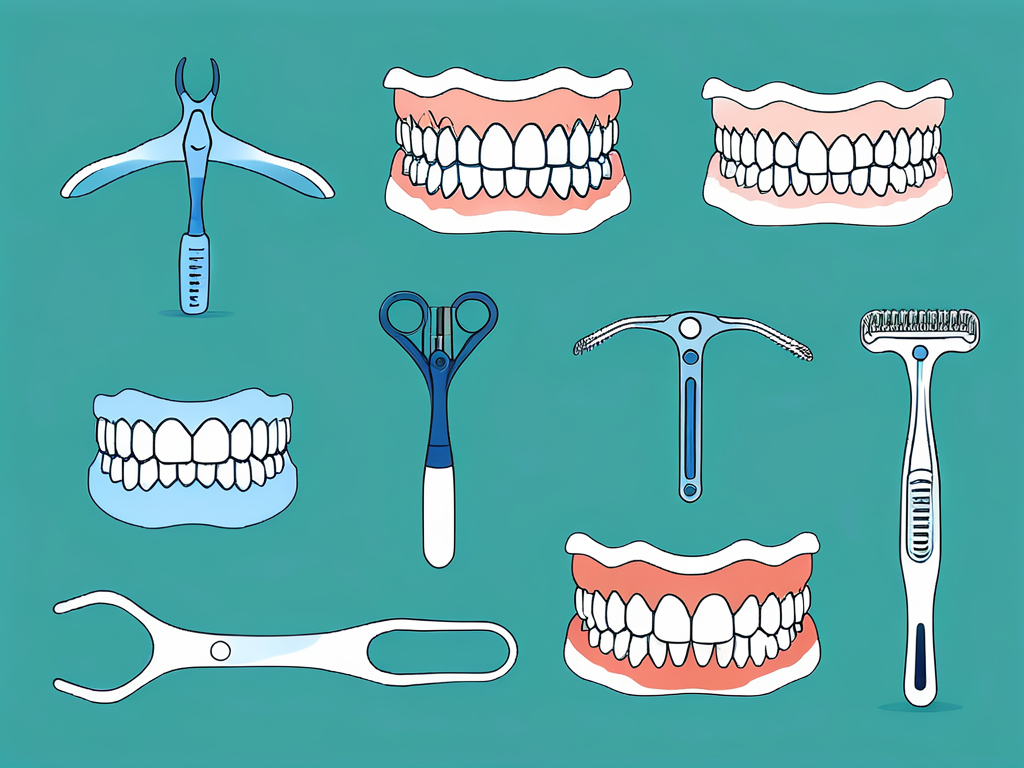Jaw misalignment, also known as malocclusion, is a condition that affects the alignment of the upper and lower jaws. This can cause various issues ranging from difficulty in chewing and speaking to facial pain and headaches. In this article, we will explore the causes, symptoms, and treatment options for jaw misalignment.
Understanding Jaw Misalignment
What is Jaw Misalignment?
Jaw misalignment, or malocclusion, occurs when the upper and lower jaws do not align properly. This can result in several problems, including an improper bite and difficulty in performing everyday tasks such as biting, chewing, and speaking.
The Anatomy of the Jaw
The jaw is a complex structure composed of various bones, muscles, and ligaments. The upper jaw, known as the maxilla, attaches to the skull and supports the upper teeth. The lower jaw, called the mandible, is the movable part of the jaw and houses the lower teeth.
Furthermore, the temporomandibular joint (TMJ) plays a crucial role in jaw movement and alignment. This joint acts as a hinge that connects the mandible to the skull, allowing for smooth jaw function. When there is misalignment in the jaw, it can put strain on the TMJ, leading to discomfort, pain, and even disorders like temporomandibular joint dysfunction (TMD).
It's important to note that jaw misalignment can be caused by a variety of factors, including genetics, injury, or habits like thumb sucking or prolonged bottle feeding in infancy. Seeking early intervention for jaw misalignment is key to preventing further complications and improving overall oral health.
Causes of Jaw Misalignment
Genetic Factors
One of the primary causes of jaw misalignment is genetics. If parents or close relatives have malocclusion, there is a higher chance of inheriting the condition. Genetic factors can influence the size and shape of the jaw, leading to misalignment.
Physical Trauma
Physical trauma, such as a facial injury or accident, can disrupt the alignment of the jaw. The force from an impact can cause the jaw bones to shift or fracture, resulting in misalignment.
Dental Issues and Misalignment
Problems with tooth development, such as delayed eruption or overcrowding, can contribute to jaw misalignment. Additionally, habits like thumb-sucking or prolonged pacifier use can affect the growth and development of the jaw.
Furthermore, jaw misalignment can also be influenced by environmental factors. Poor oral habits, such as incorrect swallowing patterns or mouth breathing, can impact the positioning of the jaw over time. These habits can put undue stress on the jaw joints and muscles, leading to misalignment.
Another significant factor contributing to jaw misalignment is skeletal discrepancies. Variations in the size and positioning of the upper and lower jaws can result in a mismatch when the teeth come together, causing malocclusion. These skeletal differences can be a result of genetic predisposition or abnormal growth patterns.
Recognizing the Symptoms
Physical Symptoms

Jaw misalignment can manifest through various physical symptoms. These may include difficulty opening or closing the mouth, jaw clicking or popping, and facial asymmetry. Some individuals may also experience jaw pain, muscle tension, or headaches.
Oral Health Symptoms
Issues with the alignment of the jaw can impact oral health. Uneven pressure distribution while biting or chewing can lead to tooth wear, chipping, or increased risk of dental problems such as tooth decay and gum disease.
Other Health Indicators
In some cases, jaw misalignment can cause additional health problems. These may include sleep apnea, breathing difficulties, and speech impediments. It is important to address these symptoms promptly to prevent further complications.
Psychological Impact
Aside from the physical and oral health symptoms, jaw misalignment can also have a psychological impact on individuals. Feeling self-conscious about one's appearance due to facial asymmetry or jaw issues can lead to a decrease in self-esteem and confidence. This can affect social interactions and overall quality of life.
Treatment Options
Fortunately, there are various treatment options available for jaw misalignment. Orthodontic treatments such as braces or clear aligners can help correct the alignment of the jaw and improve both function and aesthetics. In more severe cases, surgical intervention may be necessary to realign the jaw properly.
Diagnosis of Jaw Misalignment
Consultation and Physical Examination
If you suspect you have jaw misalignment, it is crucial to seek guidance from a dental professional specializing in orthodontics. During your consultation, the orthodontist will conduct a thorough physical examination to assess the alignment of your jaw. This examination may involve evaluating your bite, jaw movement, and any physical symptoms you may be experiencing, such as jaw pain or difficulty chewing.
Furthermore, the orthodontist will take into consideration your medical history and any previous dental work you may have had. Understanding your dental background is essential in creating a personalized treatment plan to address your specific jaw misalignment issues.
Imaging Techniques
To gain a comprehensive understanding of the alignment of your jaw, the orthodontist may utilize advanced imaging techniques such as X-rays, CT scans, or 3D imaging. These imaging tools provide detailed images of your jaw structure, allowing the orthodontist to identify any abnormalities or misalignments accurately.
In addition to assessing the alignment of your jaw, these imaging techniques also help the orthodontist visualize the positioning of your teeth and how they relate to your jaw structure. This information is vital in determining the most effective treatment approach to correct your jaw misalignment and improve your overall oral health.
Dental Impressions and Bite Analysis
Another valuable method employed in diagnosing jaw misalignment is dental impressions and bite analysis. By taking precise molds of your teeth and studying how they come together when your jaw is closed, the orthodontist can gain insight into the specific type and severity of your malocclusion.
Furthermore, bite analysis allows the orthodontist to evaluate the functionality of your bite and identify any issues with the alignment of your teeth. This detailed analysis is essential in developing a customized treatment plan that addresses not only the alignment of your jaw but also the positioning of your teeth for optimal oral function and aesthetics.
Treatment Options
Treatment for jaw misalignment varies depending on the severity and underlying cause of the condition. The aim is to improve the alignment, function, and aesthetics of the jaw. Here are some common treatment options:

- Orthodontic Treatment: Braces or clear aligners can be used to gradually shift the teeth and correct the bite. This method is often recommended for mild to moderate cases of malocclusion.
- Jaw Surgery: In severe cases of misalignment, oral surgery may be necessary to correct the position of the jaw bones. This procedure is often done in conjunction with orthodontic treatment.
- Functional Appliances: These devices, such as headgear or splints, can help modify the growth and development of the jaw in children and adolescents with malocclusion.
- Temporomandibular Joint (TMJ) Therapy: If jaw misalignment is causing TMJ disorders, treatments such as physical therapy, medication, or splints may be recommended to alleviate symptoms.
- Lifestyle Modifications: In some cases, simple lifestyle changes such as avoiding hard foods, practicing good oral hygiene, and managing stress can help alleviate symptoms and prevent further jaw misalignment.
While these treatment options provide effective solutions for jaw misalignment, it is important to understand the broader impact of this condition on an individual's overall oral health and quality of life. Jaw misalignment can lead to difficulties in chewing, speaking, and even breathing. It can also cause facial asymmetry and impact one's self-confidence.
Furthermore, the underlying causes of jaw misalignment can vary greatly. It can be a result of genetic factors, such as an inherited jaw structure, or it can be influenced by external factors like trauma or habits such as thumb sucking. Understanding the specific cause of misalignment is crucial in determining the most appropriate treatment approach.
In addition to the treatment options mentioned earlier, there are other specialized treatments available for specific cases of jaw misalignment. For instance, in cases where the misalignment is primarily due to an issue with the temporomandibular joint, arthrocentesis or arthroscopy may be performed to address the joint problem directly.
It is also worth noting that the success of treatment for jaw misalignment depends on various factors, including the age of the individual, the severity of the misalignment, and their commitment to following the recommended treatment plan. Regular follow-up visits with the orthodontist or oral surgeon are essential to monitor progress and make any necessary adjustments.
In conclusion, jaw misalignment is a complex condition that requires careful evaluation and personalized treatment. By seeking professional help and exploring the available treatment options, individuals can address the functional and aesthetic concerns associated with jaw misalignment, ultimately improving their overall oral health and quality of life.
If you're struggling with jaw misalignment and are looking for a cost-effective solution to protect your teeth from clenching and grinding, consider Remi's custom mout guards. Our dental-grade, BPA-free mouth guards are crafted in the USA and tailored to fit your mouth perfectly, providing relief and preventing further dental damage. Join The Remi Club for regular replacements at a fraction of the cost of traditional options, and experience the convenience and quality that our customers love. With our 30-day return policy, you can feel confident in your purchase. Don't let jaw misalignment impact your life any longer. Shop Now and take the first step towards a more comfortable night's sleep and a healthier smile.













